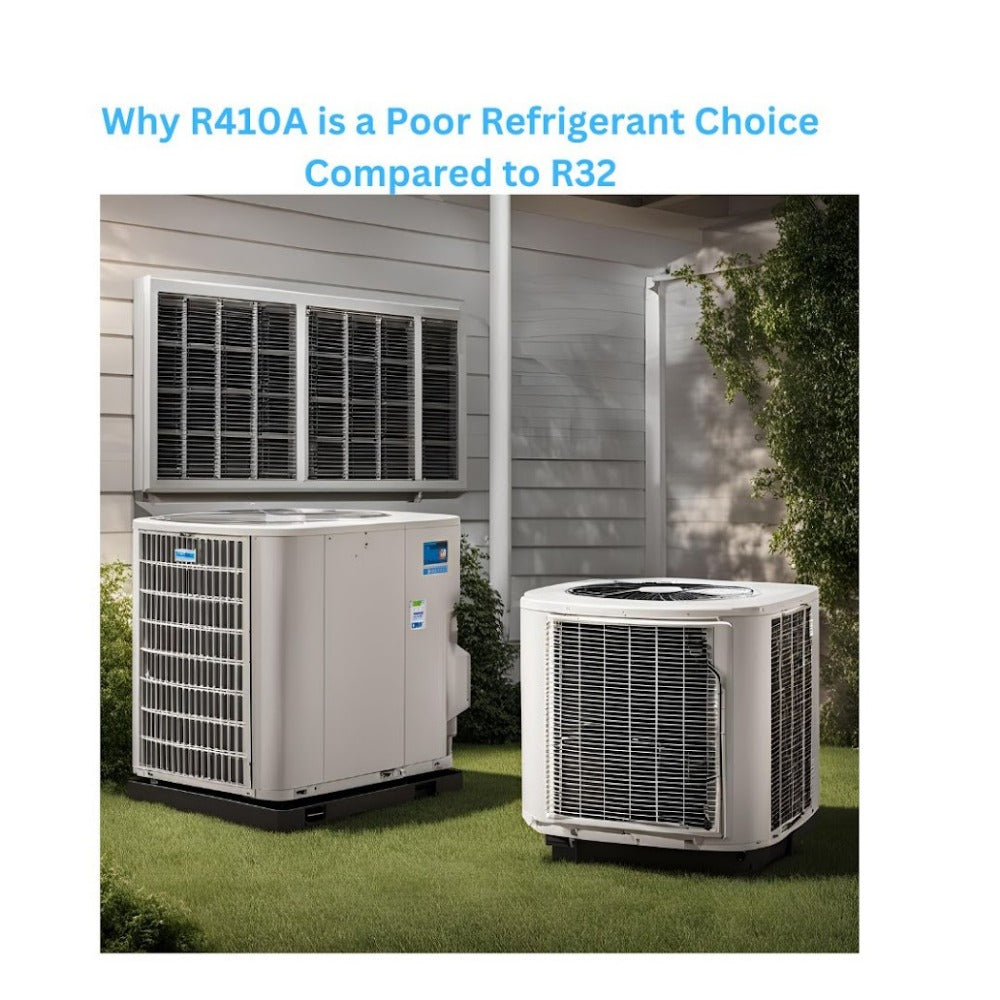As the HVAC industry moves toward more efficient and environmentally friendly refrigerants, it's essential to compare options to make informed decisions. R410A has been a standard refrigerant for many years, but it's becoming clear that it is not the best choice compared to newer alternatives like R32. In this blog post, we’ll explore why R410A is a poor refrigerant choice, focusing on its higher cost, lower efficiency, and the challenges associated with its use.
Higher Costs of R410A
Initial Unit Cost:
- R410A: The units designed for R410A are generally more expensive due to the refrigerant's properties and the materials required to handle its higher pressures.
- R32: Newer units using R32 tend to be more cost-effective, benefiting from advancements in technology and materials that lower production costs.
Service and Maintenance:
- R410A: As the HVAC industry shifts away from R410A, finding service technicians skilled in handling this refrigerant is becoming more challenging. This scarcity drives up service costs.
- R32: With increasing adoption, service for R32 systems is becoming more common and affordable. Technicians are more readily available, and the costs associated with maintenance are decreasing.
- R410A: Systems using R410A are less energy-efficient, resulting in higher operational costs over time. This inefficiency is particularly noticeable during peak usage periods, such as very hot days.
- R32: Offers better thermodynamic properties, leading to higher energy efficiency and lower electricity bills. R32 systems require less energy to achieve the same cooling effect as R410A systems.
- R410A: Struggles to maintain efficient cooling during extremely hot weather, leading to increased energy consumption and reduced comfort.
- R32: Maintains better performance in high ambient temperatures, ensuring efficient cooling even on the hottest days.
- R410A: Faces increasing regulatory pressures due to its high global warming potential (GWP). Future restrictions and phase-out plans will make it harder to obtain and more expensive to use.
- R32: With a lower GWP, R32 is favored by current regulations aiming to reduce environmental impact. Its use is likely to become more widespread and supported by future regulations.

Discover Top-Grade Air Conditioners: View Our Products Today
Lower Efficiency of R410A
Energy Consumption:
Performance in High Temperatures:
Future Availability and Regulatory Pressures
Regulatory Compliance:
R410A is becoming an outdated choice for refrigerants in HVAC systems. Its higher costs, both in terms of initial unit price and ongoing maintenance, combined with lower energy efficiency, make it a less attractive option compared to R32. Additionally, R410A's performance issues during hot weather and increasing regulatory pressures further highlight its disadvantages.
Switching to R32 not only offers better efficiency and lower operational costs but also aligns with future regulatory trends and environmental considerations. For those looking to invest in HVAC systems, choosing R32 over R410A is a smarter, more sustainable decision.
By understanding the drawbacks of R410A and the advantages of R32, consumers, contractors, and manufacturers can make more informed choices that benefit both their wallets and the environment. If you’re looking for an R32 product coming soon we suggest the Goodman 3 Ton 16.4 SEER2 R32 Air Conditioner Condenser.







